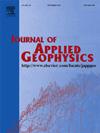Adaptive DAS data refining under multiple noise levels based on wavelet inspired invertible network
IF 2.2
3区 地球科学
Q2 GEOSCIENCES, MULTIDISCIPLINARY
引用次数: 0
Abstract
Distributed Acoustic Sensing (DAS) is a rapidly developing and highly secure fiber sensing technology, which has been gradually applied to acquisition of vertical seismic profile (VSP) data. Due to the complex nature of the collecting environment, DAS data is often contaminated with various levels of noise. Traditional multi-scale refining methods are suitable for noise with a single level, but not adaptive for DAS noise with composite and uneven noise levels. To solve the issue of weak signal recovery induced by DAS noise, this paper constructs an adaptively refining wavelet inspired invertible network (ARWIN) architecture which combines the traditional wavelet method with a customized invertible Convolutional Neural Network (CNN). Within ARWIN, the Estimation Noise Network (ENNet) is first built to estimate the noise level, which provides more suitable decomposition parameters for the following K-pair Invertible Neural Network (KINN). KINN is a lightweight network where both input and output share the same set of parameters. This shared parameter approach can effectively eliminate the parameters in each scale. KINN accomplishes the further multi-scale sparse characterization so that it can provide more reasonable threshold information for the subsequent denoising network. After KINN, the Sparse-driven Denoising Network (SDN) equipped with T-layer soft-thresholding operations can effectively attenuate DAS noise. Experiments demonstrate that ARWIN can refine DAS weak signals and suppress DAS noise with multiple noise levels.
求助全文
约1分钟内获得全文
求助全文
来源期刊

Journal of Applied Geophysics
地学-地球科学综合
CiteScore
3.60
自引率
10.00%
发文量
274
审稿时长
4 months
期刊介绍:
The Journal of Applied Geophysics with its key objective of responding to pertinent and timely needs, places particular emphasis on methodological developments and innovative applications of geophysical techniques for addressing environmental, engineering, and hydrological problems. Related topical research in exploration geophysics and in soil and rock physics is also covered by the Journal of Applied Geophysics.
 求助内容:
求助内容: 应助结果提醒方式:
应助结果提醒方式:


